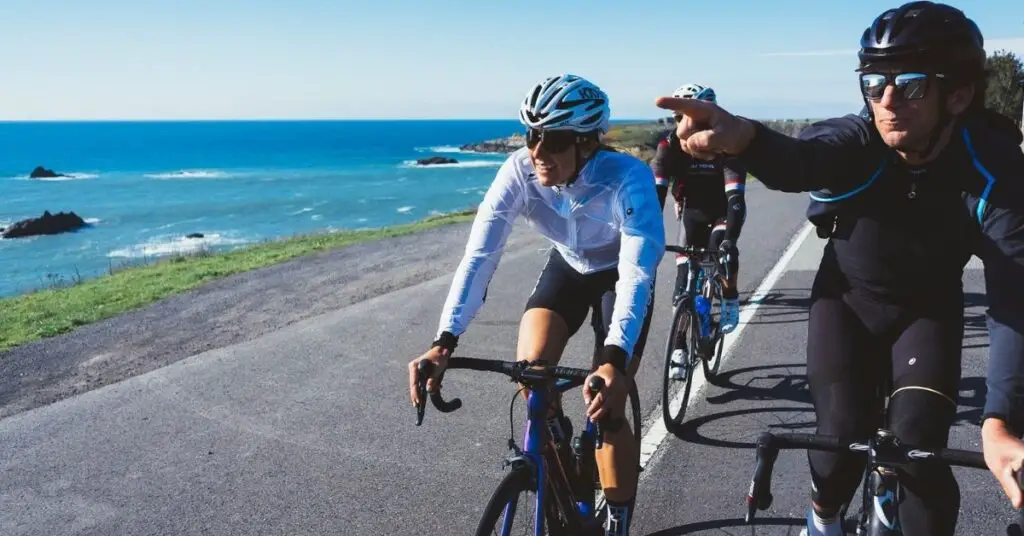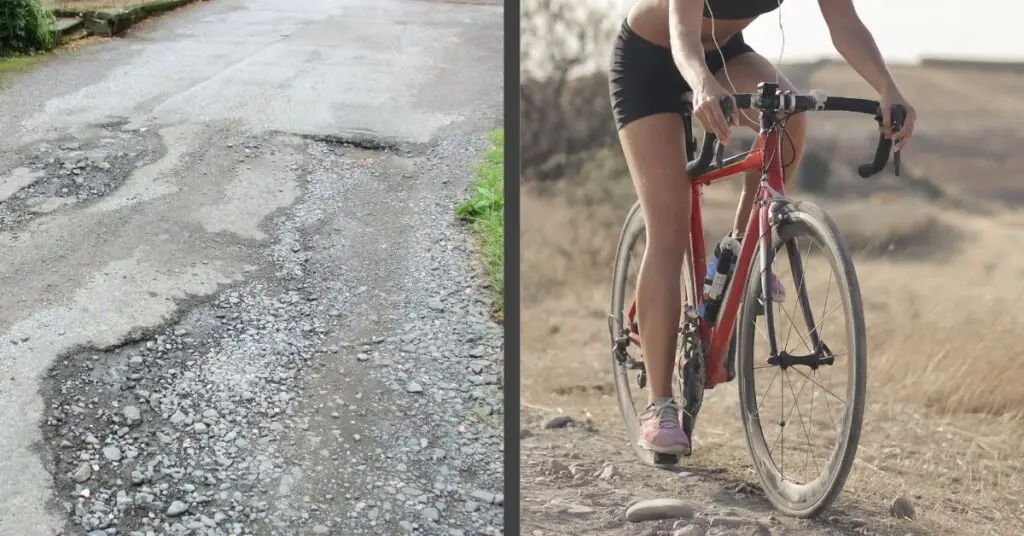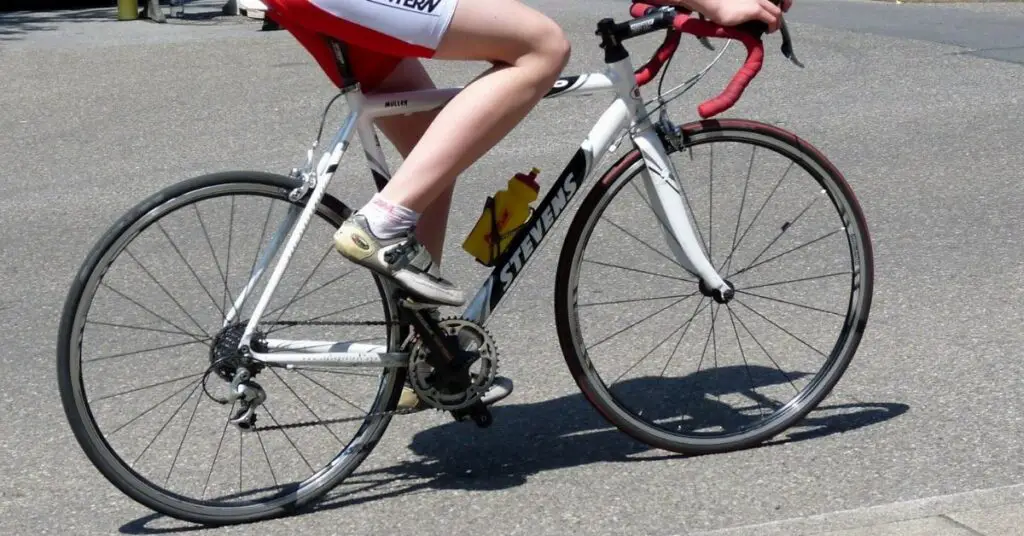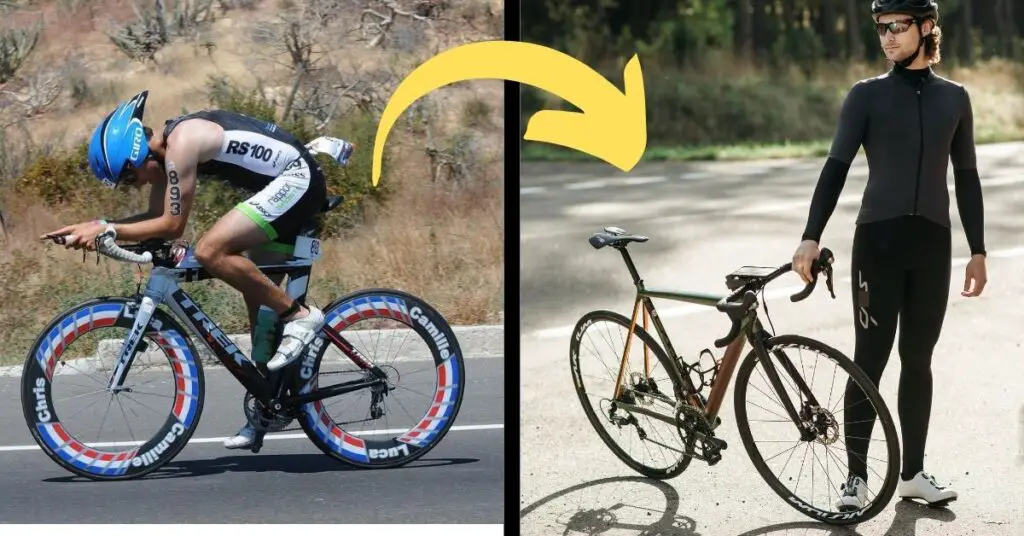Most of us have road bikes because we like the speed, beauty and drive more on paved roads.
Occasionally though the opportunity for touring arrives and we don’t want to miss out on the experience. Then you are wondering “can I use a road bike for touring?”
In this article, your question will be answered in detail. We’ll be discussing all you need in a bike for touring and how important they are. We’ll also be comparing road bikes with touring bikes in terms of touring so you can be adequately informed about it.
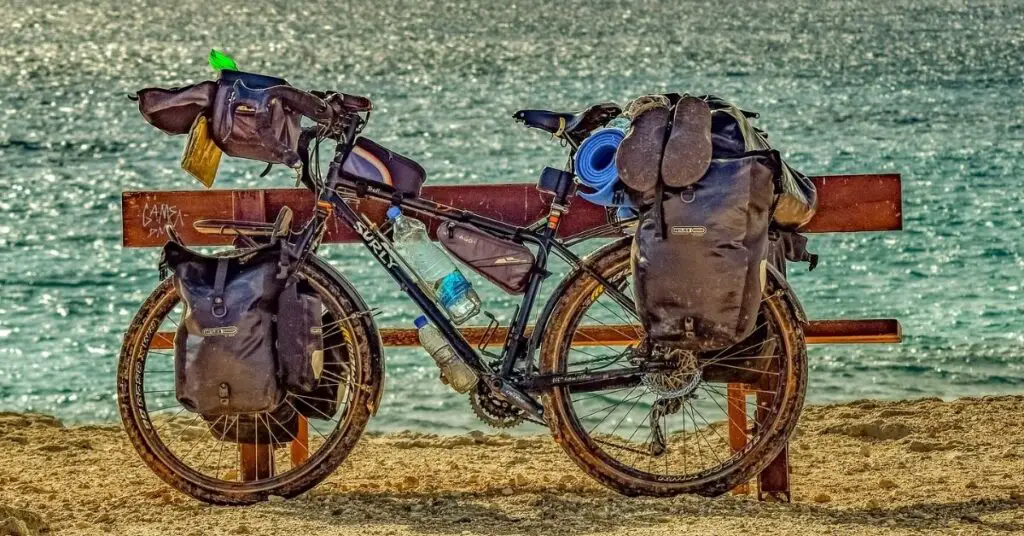
Can I Use a Road Bike for Touring?
Yes, you can. Even though road bikes are meant to be used on paved roads and for racing, they can be used to tour too. It’s more possible if you will be touring on developed roads or slightly rough terrains.
Road bikes should not be used to tour on rough roads as the tires are more likely to puncture. They are not designed for that terrain.
The components of a road bike are just not designed to take that kind of punishment and you may find yourself stranded on a lonely road if you do this without being prepared.
To use road bikes to tour on undeveloped roads or very bad terrains, you will have to modify your bike to be able to take some beating or punishment. Some of its components will need to be adjusted or replaced.
In the course of this post, we’ll be discussing these components so your road bike can be adequately prepared for touring.
What All Do You Need in a Bike for Touring?
Now let’s discuss all a bike needs to have before it can be considered good for touring.
1- Wheel and Tires
Touring is difficult without strong wheels and tires. That’s the first feature to check in the bike you’ll be choosing for touring. Else, you’ll soon have flats and bent wheels that will leave you stranded and frustrated.
26″ tires are recommended because they are strong and available worldwide. It wouldn’t be nice if your tire needs a replacement in a remote area and it’s not available. Your wheel should also be strong enough to withstand the road and not collapse under the load you’ll be carrying.
2- Racks and Panniers
These are very important. A bike with a strong and durable rack and panniers is needed if you’re going to enjoy your tour.
The rack should be strong enough to carry your panniers and extra loads. Steel is recommended for the material because it can be easily welded if broken during the tour.
3- Frame
Not all bikes have frames that can withstand long touring on rough roads. They would crack.
Remember they will also be getting the brunt of the loads you will be carrying? They need to be strong. Get a steel one so it can be easily repaired if it breaks.
4- Saddle
Don’t forget this. You need a bike with a good saddle or plan to put a good saddle on yours if you’re going to be touring on it.
Leather saddles are best because they become comfortable over a long time and lasts long. Saddles made with other materials like foam may be comfortable at the start and feel soft, but you’ll soon be feeling the metal underneath before long and become uncomfortable.
How Do Road Bikes Adapt to Touring?
You can adapt road bikes to touring by changing some of their components. This will give them the features found in bikes that are suitable for touring.
Here are some of the ways to adapt a road bike to touring.
1- Change the Frame
Modern road bikes’ frames are flexible and light so they are more likely to break during a long-distance ride. This is because they are mostly made of aluminum and carbon and designed for speed.
Change this to a steel frame. Steel frames are heavier but they last longer than other frames and can be easily repaired.
Note that changing your bike’s frame can be very expensive, you may as well get a touring bike if you have the money.
If you are using an old road bike though, you may not need to change the frame. They usually have steel frames that are strong enough for light touring.
2- Change the Wheel and Tires
If you will be touring on developed roads, you may not need to do this. Though you wouldn’t be able to carry much load on your wheel.
Your best bet is to change your wheel into something bigger and sturdier and get big tires too. Changing flat tires during a tour isn’t fun and should be avoided.
You can’t just change a road bikes’ wheels and tires to your desired size though. You have to make sure that your bike can accommodate the changes.
Usually, there is a limit in the increase you can make to your road bike’s wheel and tires. Find out yours.
3- Adjust the Saddle Height
Road bikes aren’t set up for comfort. Leaning forward like that may be good for races but you’ll soon discover they aren’t suitable for long-distance rides.
Adjust your saddle so you’re sitting more upright and comfortably. You should get leather saddles while you’re at it.
Additional Costs (To Use a Road Bike for Touring)
In addition to spending on all the changes we discussed above, you’ll need to also spend on quality racks and panniers for your bike.
Not all road bikes are designed to use racks so they do not come with eyelets. Only old racing bikes come with this and not many have them.
You may have to get seat post mounted racks or other types of racks that can be mounted without eyelets. Doing this will cost you more money. You should also note that some road bikes don’t even have enough clearance for this.
The other alternative is to get frame bags, handlebar bags, and seat post bags. These will however disrupt your handling because road bikes aren’t used to that weight. It will be uncomfortable and you won’t enjoy the ride.
You may also have to buy and install smaller chainrings and bigger cassettes for lower gearing. We’ll speak more on this in the next heading.
Touring bike vs Road bike
1- Gearing
Touring bikes have lower gearing compared to road bikes. They usually come with triple cranksets and cassettes ranging from 8 to 10-speed.
This gives touring bikes a wider gear range and lower gearing options. These low gears enable riders to ride uphill with loads of luggage without a problem. This is hard to accomplish with a road bike.
2- Brakes
Touring bikes use linear-pull brakes while road bikes use disc/rim brakes. Linear pull brakes are more suitable for touring because they protect the outer rim from wear and tear so you can ride safely even during wet conditions.
3- Handlebars
Touring bikes have different types of handlebars that make riding long-distance comfortable and easy. They are designed for proper hand position to protect you from exerting your hand muscles and developing pain.
Road bikes on the other hand use drop handlebars that make you bend forward and lean downward. This helps you ride faster but can be painful if you ride for too long.
4- Wheels and Tires
Touring bikes have wider wheels and tires that support your weight and touring loads. They are also puncture-proof and can withstand the roughness of the roads you’ll be touring on.
Road bikes have slimmer and narrower wheels and tires. They are smooth and fast on paved roads but don’t do well on rough terrains so they aren’t suitable for touring.
5- Position
The seating position in touring bikes is better than that of road bikes. Because road bikes use drop bars, the saddles are a bit raised and positioned in a way that makes you lean downward.
Touring bikes on the other hand give riders an upright position. You sit straight facing forward so your back is properly positioned to withstand long-distance rides.
Final Thoughts!
You can use your road bike for touring but it may cost you a lot more than you budgeted for. There are a couple of changes you need to make to your bike before it can be suitable for touring and this will require your money, time, and energy.
The most important components to change are the frame, wheels, tires, and gears. You will have to add lower gears to your bike to make it suitable for climbing uphill.
This may involve changing to a triple crankset or putting a smaller chainring like 34T downward on your bike and a cassette with a big cog, like 32T
It is not compulsory you tour with a touring bike but the bike you want to tour with must have some essential features which we have discussed at length.
Once your bike has been successfully modified to have these features, you can go ahead to plan your touring trips.
Cheers!

